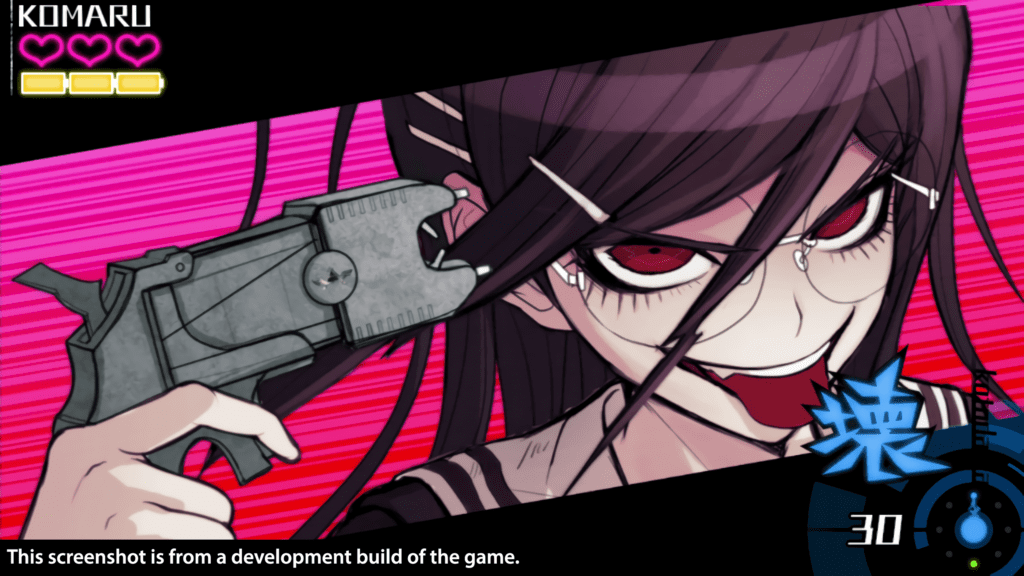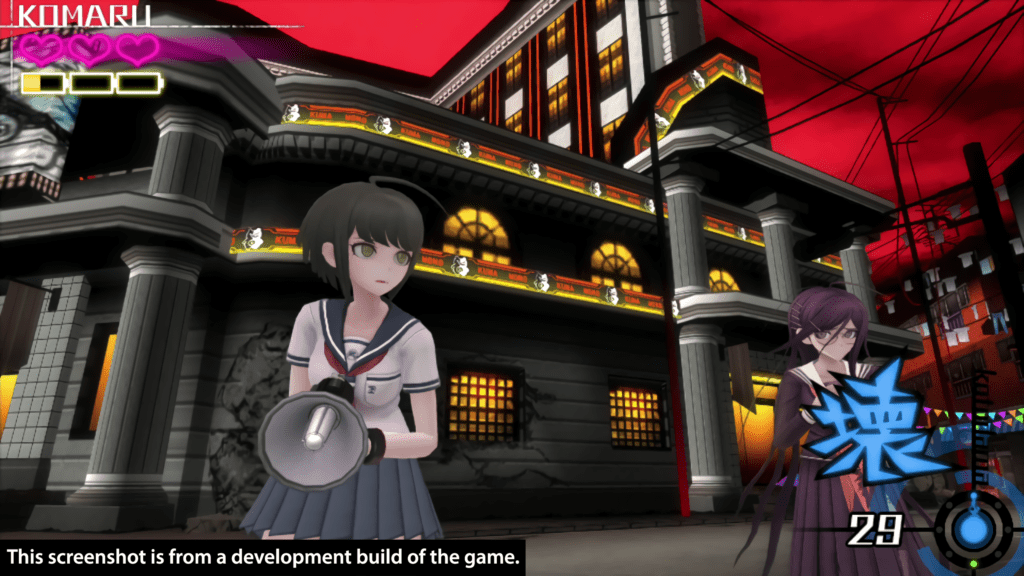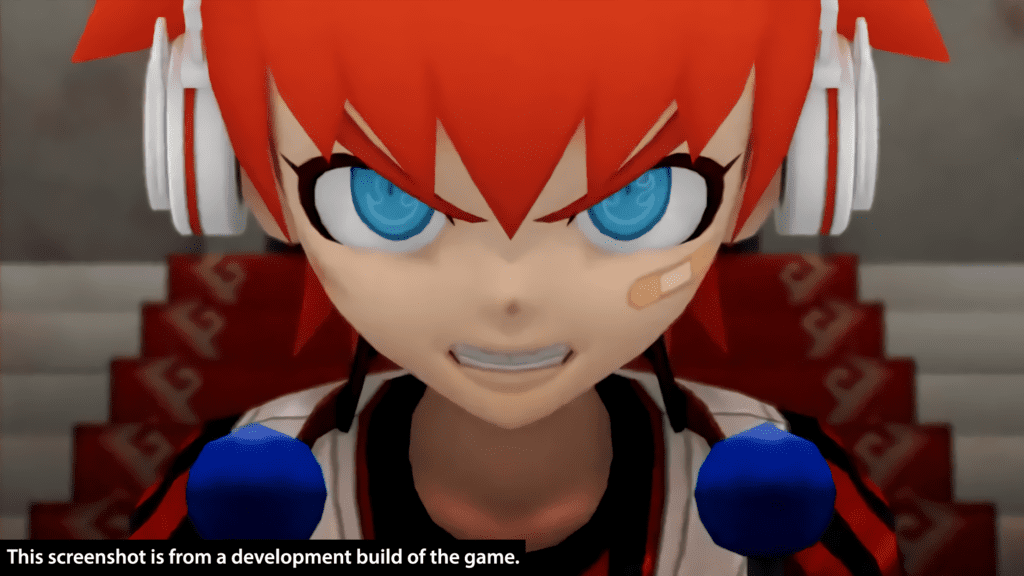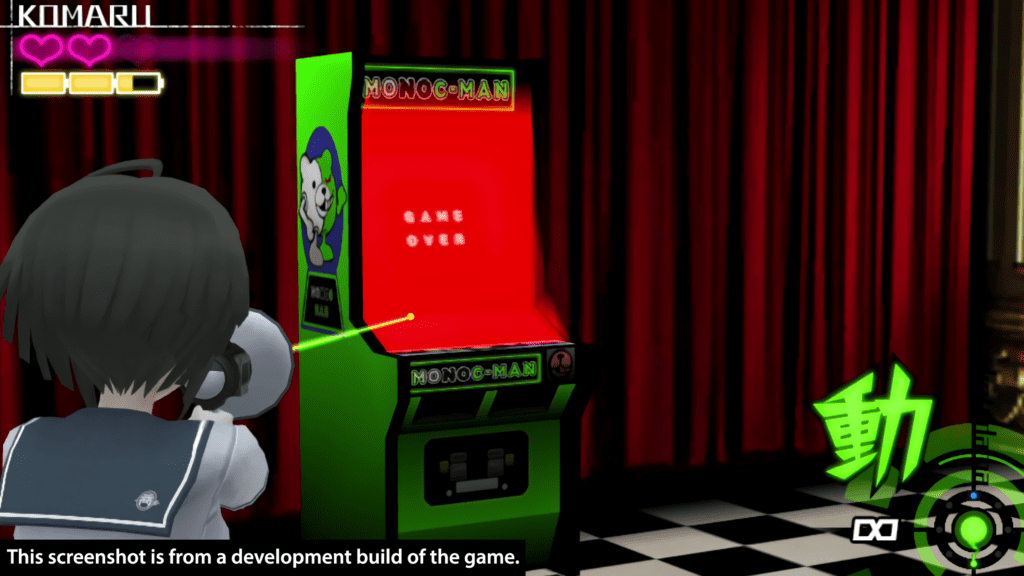It can be challenging reviewing a game in a series you have not yet had the pleasure of playing. You may ask yourself, “will this game make any sense without playing any of the previous titles?” Knowing that this game was made in a different style compared to the previous ones, I figured it would be okay to miss the first games in the series. Ultra Despair Girls may deviate from its predecessors, but I think it offers a new audience a chance to enjoy a well-told story.
The story follows Komaru Naegi, a young girl who was kidnapped a year and a half before the beginning of the game. She is finally being released thanks to a battle between crazed robots called Monokuma and a team of fighters called the Future Foundation. One of the members gives her a hacking gun to protect herself from the crazed robot bears and tells her to escape. Upon her escape, she meets up with different people on her quest to flee Towa City and find her family.
To say that this is a very slim summary of the story is an understatement. There are twists and turns everywhere and there are more exposition and back story around every corner. If I was to try and write down the full plot, it would take up the entire review. Therefore, I am sticking to the main plot that serves as not only the central focus but where the main characters draw the most character development from. A good portion of this development happens between Komaru and a member of Future Foundation she meets by the name of Toko. Komaru and Toko travel through the city trying to escape while trying to understand what’s happening around them.
Through Komaru and Toko’s plotline, the player has an opportunity to learn what happens in previous games. It is really a great plot device that catches up those of us who missed the earlier entries. I never felt I was lost when a character showed up or back story was discussed. You are always given enough information to understand what is going on, at least as much as is needed for that point in the story. I can only recall one time that something happened that left me going “what?” and that was with a character that shows up in the last few shots of the game. It won’t take you long to realize that they had more to do with the old games, but it is clear the developers will be giving us more story in the games to come.
The controls for the game are surprisingly well thought out. Considering this game started out on PS Vita, I can see how they probably worked well there, too. This is probably one of the easiest to control games I have played in a while. If you are at all familiar with cover based third-person shooters then this game will probably be an easy pickup. The only difference is you don’t have to take cover during a fight. Sadly, there is one glaring issue with the controls and that is the right sticks camera controls. They are incredibly slow. To make matters worse, there is no option to tweak the settings and increase the speed. What you see is what you get. This is made infinitely worse when you must use the laser sight to target enemies. You can pick up power-ups that will increase your laser sight speed, but I never saw any improvement in performance.
There is a way around this with a quick lock power-up you can pick up, but it’s completely random as to which enemy it targets. This can be somewhat useful on some of the bosses, but there are some enemies with many points you must hit. I left the auto lock off during my play through and focused on giving myself time to aim properly. Persistence pays off on this one. I completed the game using the camera the way it is.
It’s hard to really comment on graphics that were designed for the PS Vita, so I will make this section quick. Ultra Despair Girls is a port, so it will not be as good of quality as a game made for the PlayStation 4. But the aesthetic of the game itself more than makes up for the low resolution. The switching between CG cut scenes to a graphic novel, still, image-cut scenes are used beautifully to express different things within the game. There are so many interesting and fun style choices that really make the game pleasant to see.
The sound design is good for this game and matches the style very well. It is somewhat your typical anime style fanfare but when something isn’t broke, you don’t need to fix it. The music is probably the weakest part of the game. You will hear the same songs so many times during the game you will be sick of them by the end. Some of the voices can be quite repetitive as well. If this game was shorter, then I could see it is serviceable, but the game was quite long and I admit I was begging for it to be over so I didn’t have to hear them say, “Oh look another arcade machine.”
Overall, this game is glitch free. The frame rate was fantastic and never slowed down for a second. Which was even more puzzling to know how well it ran (considering that it had issues that have been pretty much erased from modern games). This issue was at its worst on the PlayStation 2 and has since then been pretty much resolved during the last two generations. There are a lot of wall corners you can get caught on without being close to them. As annoying as this can be, you will learn how to maneuver around them and progress with very little hang up. It just takes some time to get used to it.
One of the more nagging issues in this game is probably also the smallest. One simple option would fix this; there is A LOT of dialogue which is written out on the screen. The in-game cut scenes do not progress unless you press a button to continue after a character finishes talking. You will be pressing this button a lot. This game really needs an option to allow the scenes to continuously play with an option of stopping it as you wish.
I’ve been saving a certain topic related to this game for the very end, and that is the rather adult nature of much of its story. This game is in no way marketed to children, but I feel it is worth saying that this game has a lot of dark topics. What’s darker than the villains being murderous children seeking to spill the blood of the adults? There are jokes about the main character’s infatuation with her older brother. One of the villains in the game experiences traumatic memories and has flashbacks about what can only be interpreted as a form of sexual assault. Toko has odd fetish dreams about her “master” between the levels as well. None of this affects my choice in the score for the game. I just feel this is worth mentioning for anyone who might have younger kids interested in anime based games.
If I was to name one thing about this game that really got to me, it would have to be the sheer amount of information thrown at the player throughout the game. The game oozes plot and back-story. By about halfway through the game, I gave up on reading or listening to what the characters had to say about the bonus pick up items. I would just get the items and move on. As it is, the end of the game reminds me of Lord of the Rings: Return of the King. They could have ended it at any of about six different moments and it would have worked just fine. I cheered when the credits began rolling; there is a lot to take in about this game. This is one instance where I will say that maybe there was too much.
Ultra Despair Girls is pretty much a visual novel with levels you play to reach the next chapter. I really liked this idea. Even if it goes on far longer than it should. I can also see this concept being cleaned up and made better with later iterations. I do need to say: that you as the potential gamer will be watching and reading a lot more than playing. It’s especially story -heavy in the first and third acts of the game. The second act houses a good portion of the action; there is a decent amount of gameplay here but it could be much more.
I played this game on the default medium difficulty. Sadly, there wasn’t a lot of challenge till about the fourth chapter of the game. Even then it died down in chapter 6 (the last chapter). If you are looking for a challenge I suggest a harder difficulty level. Easy difficulty isn’t really needed considering how basic medium played out. Most of the difficulty was in controlling the camera anyway.
Ultra Despair Girls was a fun game, all-in-all. It was also a fun introduction to a series I had not yet played before. It has me interested in what the rest of the games say about the events that happen. I wish I could say whether previous fans of the series would like it or not; I know this one is drastically different in its game mechanics compared to 1 and 2. What I will say is this: the game has a few pitfalls, but it is also fun and will keep you interested in the characters and story. This third-person adventure game will give you your money’s worth with its creativity and well-told story.
[vsw id=”y1BW8B1yeak” source=”youtube” width=”425″ height=”344″ autoplay=”no”]

